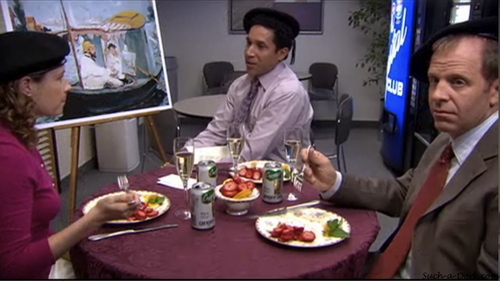$150 FROM OPTIONSXPRESS, 20% OFF AT FEDEX: Maximizing Money points out that OptionsXpress is offering a $150 Amazon gift card if you put $1,000 in an account and make 10 trades within the first 90 days.
The same site also brought to my attention the fact that Amex is giving you 20% off at the FedEx Office store (formerly known as Kinko’s) now through August 31. You will need to sign your card(s) up here, and I have no idea if Fedex sells gift cards, maybe Chasing The Points knows?
Speaking of which, read about CTP’s experience with fraudulent gift cards here.
SAVEROCITY: Frequent Miler mentioned Saverocity in the same breath as mine in Tuesday’s post, and I have to say it’s a pretty good site. Check it out if you’re so inclined.
HOW TO INVEST IN WINE: MilesAbound has a great primer on investing in wine. I will file this under “Things I will never personally do, but it’s kind of cool to know about.” Why invest in wine, you ask?
Taking Cheval Blanc as an example, typically they will release about 6,500 cases per year. Every single year after that some of those cases will be opened and drunk and as time goes by the amount of that wine in supply decreases. As long as you stick to wines with the right level of consistent demand and staying power (more on that later) and is stored correctly (again, more later) then the wine itself is likely improving with age. So there is a natural increase in price both from dwindling supply and increasing scarcity and quality. And best of all, if it really does not work out financially – you can always drink it!
There’s much more here.
HOW TO INVEST IN HIGH END ART: Don’t. Quartz has an interesting article, the title of which, “High end art is one of the most manipulated markets in the world,” sums it up. There’s plenty of detail there about who’s manipulating prices, how they do it, and why, but this story really caught my eye:
A few years ago a young art collector from New York I know bought a painting from a New York gallery. A few weeks later she went to the Miami Basel art fair where a celebrity heard about the painting. He offered to buy it for more than 50 times what she paid for it. She refused and he raised his offer to a sum that would mean she’d never have to work again. She explained that she would not bargain with him—any resale of the painting must go through the gallery, so they’ll get a commission and select the price—not her. The young collector knew there would be consequences to making the sale. She may have owned the painting, but reselling it at a profit without the gallery’s permission would blackball her from the art industry. To her, that was not worth the millions she was offered.
I would happily be blackballed from any industry for millions of dollars, but maybe that’s just me. As the title makes clear, manipulation primarily occurs at the high end. Your local galleries are presumably less corrupt:
Price manipulation occurs at the elite end of the primary market. There exists a lower tier art market, full of small unknown, local galleries outside of large urban areas where prices are listed, transactions occur at that price, and the work is sold to whomever wants to buy it off the street. These collectors buy art simply because they love the work but artists who sell at these types of galleries probably can’t support themselves selling their work.

I haven’t seen any gift cards at the FedEx Office — been to a couple and they’re all business, sadly.
Good to know, thanks.